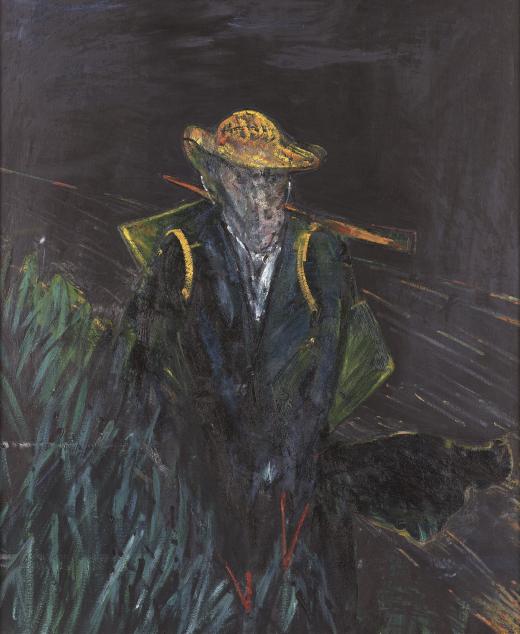HUMAN CAGES
“I cut down the scale of the canvas by drawing in these rectangles which concentrate the image down. Just to see it better.”
Francis Bacon*
After World War II—in which Francis Bacon worked in a civil capacity because of his chronic asthma—the artist’s work was once again recognized by critics and the public. He also drew the attention of gallery owner Erica Brausen, who soon exhibited his paintings in different European countries. In 1948, the Museum of Modern Art, New York purchased its first Bacon work from Brausen.
During this period, the artist created a new universe of images conceived via literature, film, art, and his own life. Bacon approached this iconography using a unique language, reflecting human vulnerability with utter rawness. Somewhere between human and animal—as in some of Eadweard Muybridge’s photographs— the figures begin to appear enclosed and entrapped in cages or cubes. Bacon used this device to focus the viewer’s attention on the figures, which were smudged or disfigured, reduced to strokes of grayish and bluish colors reminiscent of El Greco and the drawings of Alberto Giacometti, which Bacon preferred over his sculptures. Later in this period, Bacon also paid homage to Vincent van Gogh, whom he evoked through his loose brushwork and bright palette, which contrast with the dark figures in other paintings. Bacon was fascinated by the way Van Gogh veered away from the rules and literal reality in favor of expressiveness.
* David Sylvester, The Brutality of Fact: Interviews with Francis Bacon 1962–1979, Interview 1 – 22:23

